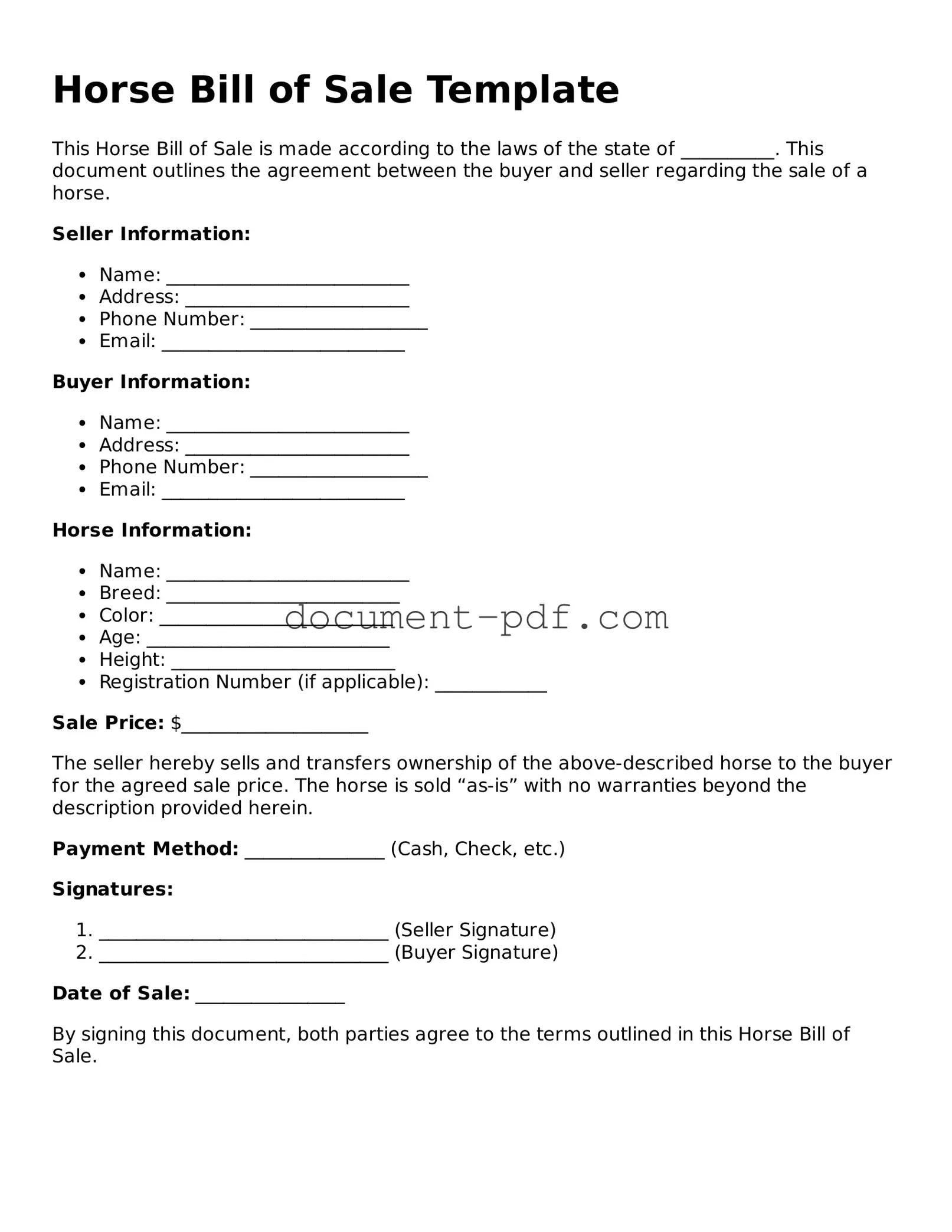Horse Bill of Sale Template
This Horse Bill of Sale is made according to the laws of the state of __________. This document outlines the agreement between the buyer and seller regarding the sale of a horse.
Seller Information:
- Name: __________________________
- Address: ________________________
- Phone Number: ___________________
- Email: __________________________
Buyer Information:
- Name: __________________________
- Address: ________________________
- Phone Number: ___________________
- Email: __________________________
Horse Information:
- Name: __________________________
- Breed: _________________________
- Color: _________________________
- Age: __________________________
- Height: ________________________
- Registration Number (if applicable): ____________
Sale Price: $____________________
The seller hereby sells and transfers ownership of the above-described horse to the buyer for the agreed sale price. The horse is sold “as-is” with no warranties beyond the description provided herein.
Payment Method: _______________ (Cash, Check, etc.)
Signatures:
- _______________________________ (Seller Signature)
- _______________________________ (Buyer Signature)
Date of Sale: ________________
By signing this document, both parties agree to the terms outlined in this Horse Bill of Sale.
